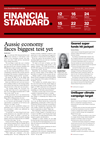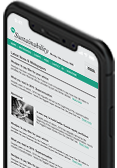'Staggering' gender perception gap persists: ReportBY MATTHEW WAI | TUESDAY, 1 JUL 2025 3:58PMA new study reveals that men are generally more optimistic when it comes to gender parity across the professional workplace, despite that data suggests otherwise. According to Robert Walters' latest Women in the Workplace report which surveyed over 2000 white-collar professionals in Australia and New Zealand, nearly all women believe that they are underrepresented in leadership roles. On the contrary, over half (57%) of men believe female are equally represented, with only 2% of women agreeing. The study examines how gender influences workplace experience, leadership pathways, and organisational culture in 2025. The gap extends further as over half of male respondents believe their organisation has equal representation of strong female leaders - but only 31% of women agree. Alarmingly, 28% of women say their workplace is led predominantly by men - more than double the percentage of men (13%) who see it that way, Robert Walters said. Further, 67% of women cited bias and opportunity gaps for the main causes of gender imbalance in leadership, compared to just 28% of men. "A further gender divide emerged around parental leave and return-to-work challenges: 13% of women named this as a key barrier, whilst only 2% of men did," it added. Data from LinkedIn Talent Insights reveals that women remain underrepresented in leadership role, with men making up 68% of executive and C-suite roles, while women only comprise of the remaining 32%. Robert Walters chief executive Australia and New Zealand Shay Peters added that the "staggering" leadership gap in 2025 is simply "unacceptable". "We can't afford to mistake minimal progress for meaningful change, it's time to drive real, measurable action that truly moves the dial," Peters said. "If we want to build truly merit-based workplaces, then we have to be honest about the fact that not everyone starts from the same position. "Leaders have a responsibility to create a culture where everyone has a fair chance to progress. That goes beyond just intent - reviewing how leadership is developed, how performance is measured, and how bias is addressed in real decisions. "Systemic change takes time, but it starts with being deliberate: setting targets, tracking progress, and being accountable for outcomes - not just effort." Robert Walters global head of advisory Sinead Hourigan echoed Peters' statement, adding that the current complacency on display is a "dangerous barrier" to progress gender parity. "When over half of men believe gender equality in leadership has been achieved while women continue to experience barriers, leaders have to ask: are we making decisions based on everyone's reality?" Hourigan said. "Gender equality needs to mean that your career trajectory has been determined by your capability and your achievements alone. Women don't want an easier path - they want the same path, without barriers. "Education and awareness remain the key factors in ensuring that we reduce the impact that bias can have on effective decision making within an organisation." |

The head of the United Nations Joint Staff Pension Fund is taking on a new role at Northern Trust Asset Management.
Pablo Berrutti, senior portfolio specialist at Stewart Investors, discusses emerging market investment opportunities and their main growth drivers.
Latest modelling from Emmi indicates carbon emissions may plateau within the next two years before gradually declining, signalling the first ever emission stabilisation outside of an economic crisis.
The likes of Sally Field, Mark Ruffalo and Jane Fonda are calling on the SAG-Producers Pension Plan to dump its holdings in oil and gas companies.
















